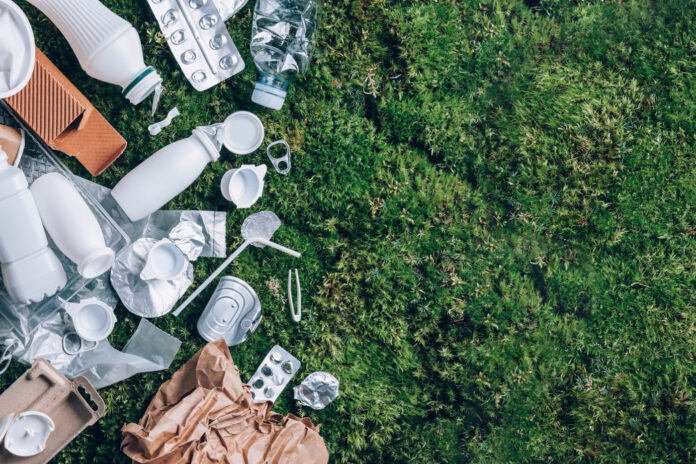Here is the ugly truth: Despite increasing consumer demand for sustainable packaging containing quality products, the cannabis industry produces billions of units of single-use packaging every year. The industry must develop a circular packaging model that reduces the impact of single-use packaging.
For decision-makers at cannabis brands, sourcing sustainable packaging requires an objective assessment of a material’s impact throughout the value chain. An accurate examination of packaging’s environmental footprint begins with evaluating both the upstream and downstream environmental impacts of packaging materials at the local, regional, and global levels. These ecological impacts must be evaluated equally while sourcing from sustainable packaging companies, and such an assessment inherently will prompt a discussion about the trade-offs between different packaging materials.
Upstream impacts
In my pursuit of truly eco-conscious products, I have found materials with significant upstream sustainability benefits often have negative downstream impacts—and vice versa. Having an honest conversation about these trade-offs can help companies determine specific sustainability goals throughout the value chain where they want to make a positive impact.
Evaluating a material’s upstream environmental impact includes determining the ecological implications of raw materials sourcing as well as the production and transportation of packaging materials. The most commonly used materials for cannabis packaging are plastic, metal, glass, and paperboard, so let’s look at the upstream impacts of these materials.
The raw materials for glass, metal, and plastic all are obtained from mining, and mining these different materials produces varying degrees of negative upstream environmental impact. That said, the carbon footprint of sourcing the raw materials for glass far outweighs those for metal and plastic. Furthermore, according to McKinsey & Company, producing and transporting glass and metal generates twice the amount of greenhouse gas emissions generated by producing and transporting plastic.
On the other hand, sourcing raw materials for paperboard contributes to deforestation, and the production of paperboard requires a tremendous amount of water and significantly more energy than the production of plastic. The production of paper bags, for example, generates more than three times the amount of greenhouse gas emissions generated by producing plastic bags.
Downstream impacts
Now that we have looked at some of the upstream environmental impacts of the most common materials used for cannabis packaging, let’s shift focus to their downstream ecological effects.
Upstream analyses look at the environmental impacts of sourcing raw materials and producing and transporting packaging materials. Meanwhile, downstream analyses primarily focus on waste management and the ecological impacts packaging materials have when they escape traditional waste streams and end up in the environment. Waste management refers to the collection and recovery or disposal of packaging materials through methods such as recycling, composting, and landfilling.
While there is a compelling case to be made for the upstream benefits of plastic packaging, these benefits often are lost downstream. There is a desperate need to improve the waste-management infrastructure surrounding all plastics. In fact, fewer than 10 percent of plastics are recycled correctly.
While metal, glass, and paperboard have problematic upstream environmental impacts, they have a much higher recycling rate than plastics. However, glass, metal, and paperboard are extremely energy-intensive to recycle.
Paperboard recycling, like paperboard production, is not only energy-intensive but also requires a tremendous amount of water. Nevertheless, according to the United States Environmental Protection Agency, recycling paper is 40 percent less energy-intensive than the initial production process, uses 35 percent less water, and creates 74 percent less air pollution than paper production.
Because the value placed on the material is so low, plastic is the biggest culprit in terms of packaging materials that end up in the environment. Recycled plastic sometimes can cost even more than virgin plastic. That said, all packaging materials can harm ecosystems if they end up in the environment. For example, heavy metals leaked from metal product creation are detrimental to the health of waterways. Microplastics are a hot topic right now because they are difficult to remove from ecosystems.
This consideration is why one of the major downstream considerations for all packaging materials is their potential to present pollutants to humans and the environment. Toxins inside any packaging material potentially can leak into the environment and harm even robust ecosystems.
The sustainable future
In short, there is no silver-bullet solution to sourcing sustainable packaging. Consumers and the industry have roles to play in developing a circular packaging model. Recycling materials will normalize as communities continue developing recycling infrastructure and consumers become fully cognizant of recycling protocols. The industry must educate consumers about properly reusing and recycling packaging. Most importantly, the industry and regulators must establish back-end systems to manage packaging materials’ collection, recycling, and reuse properly.
Retailers and brands must provide transparency in their sustainable packaging practices to earn customer loyalty. Explaining why a product arrives inside sustainable packaging can be a powerful marketing tool. Customers will demonstrate why sustainability makes good business sense when they opt to purchase products that make use of sustainable packaging solutions instead of products packaged in more traditional materials.
By shaping consumer and brand conversations about how sustainable packaging looks, feels, and functions, we stand the best chance of minimizing harm to our planet.

James Eichner is cofounder and chief science officer at Sana Packaging. He earned Master of Business Administration degree at University of Colorado Boulder and is a frequent speaker at industry events including the Cannabis Sustainability Symposium and NoCo Hemp Expo. Prior to founding Sana, Eichner worked in the social and environmental nonprofit sectors.










[…] aeroponic growing provides other benefits, too. Perhaps the most notable is a reduction in environmental impact. A study published in the Journal of Cannabis Research found sungrown “cannabis in a growing […]
[…] waste is a serious issue, and brands must carefully consider their environmental impact. According to Kane, many containers seem recyclable at first glance but actually may end up in the […]
[…] is a crucial consideration in packaging design. Consumers are increasingly aware of packaging’s impact on the environment, and many seek brands that prioritize sustainability. More than 75 percent of consumers say they […]
[…] for startups that may not have the up-front investment for all the equipment, raw materials, labor, packaging, and warehouse space required to create, store, and ship goods that may or may not resonate with […]